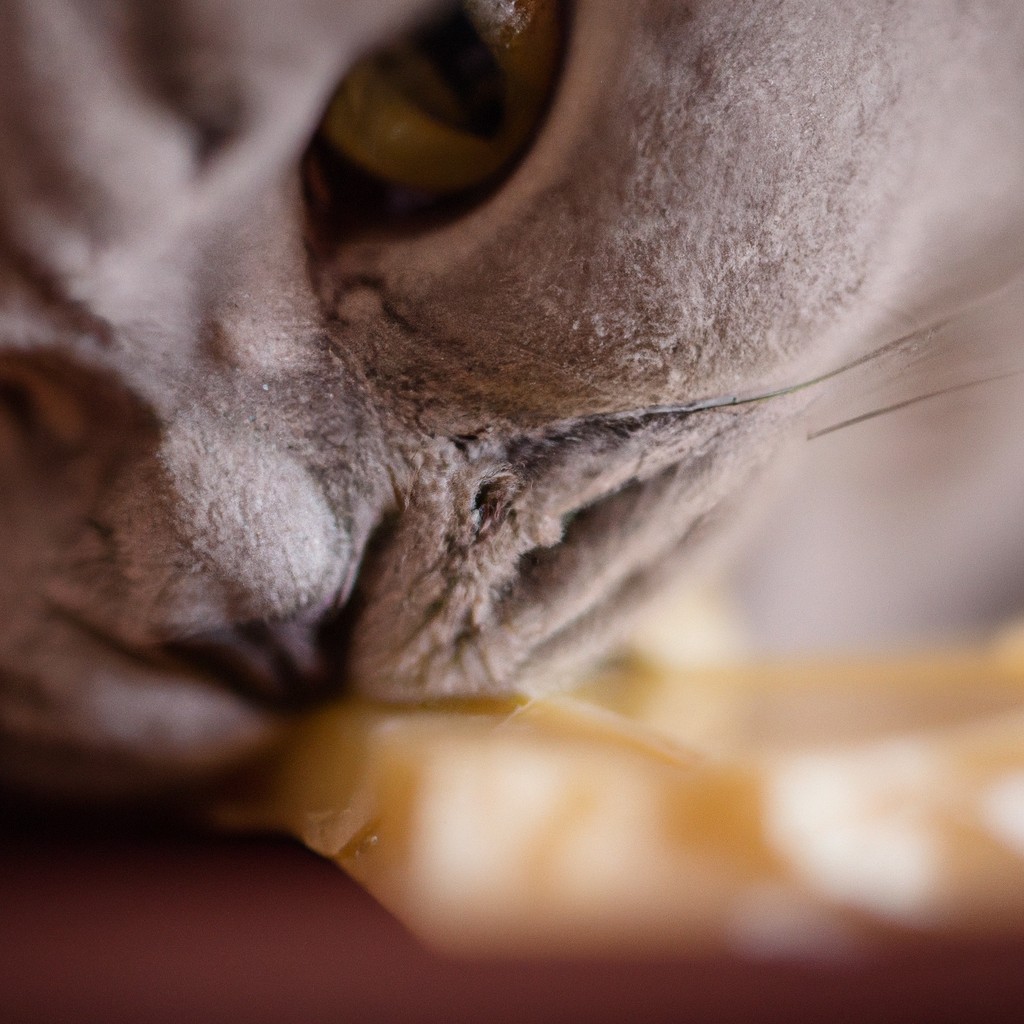No, monkeys should not eat chocolate as it contains theobromine, which can be toxic to them.
Monkeys, like humans, may find the taste of chocolate appealing, but it’s essential to know that feeding them chocolate is not recommended. Chocolate contains theobromine, a substance that is toxic to many animals, including monkeys. While humans can metabolize theobromine, monkeys process it much more slowly, which can lead to poisoning.
This article will delve into the reasons why chocolate is harmful to monkeys, the effects of theobromine, and safer food alternatives for these intriguing creatures.
Key takeaways:
- Monkeys should not eat chocolate due to its theobromine content.
- Theobromine is toxic to monkeys and can cause severe symptoms.
- Even small amounts of chocolate can be dangerous for monkeys.
- Provide healthier alternatives like fruits, berries, and leaves.
- Educate others about the dangers of feeding chocolate to monkeys.
Inside
Chocolate Is Toxic to Monkeys
Primary in the toxic elements of chocolate to monkeys is theobromine, a compound difficult for these animals to metabolize. To humans, theobromine serves as a mild stimulant, but the story differs for the monkey, whose body lacks the enzymes to break this compound down effectively.
Exposure to theobromine results in a series of unpleasant symptoms, starting with mild restlessness. As concentrations of theobromine continue to accumulate in their system, they could experience more severe symptoms such as tremors, abnormal heart rhythms, and seizures.
Even in minute amounts, chocolate can evoke symptoms that are rather unpleasant for monkeys. Given their small body weights compared to humans, even a single piece of chocolate could potentially provoke theobromine poisoning.
When monkeys consume chocolate, the theobromine remains active in their body for a prolonged period. This can affect their overall behaviour, making them more agitated, restless or exhibiting signs of distress.
Opt for healthier snacks for monkeys. Foods that are part of their natural diet, such as bananas, berries, and leaves, offer necessary nutrients without the risk posed by chocolate. Not only do these alternatives promote good health, but they also cater to the monkey’s natural instincts and preferences.
Educate others on the dangers of feeding chocolate to monkeys. Whether in domestic, public, or wild settings, the message needs dissemination that chocolate is harmful to monkeys. By broadcasting this knowledge, the steps towards ensuring their safety and wellbeing will be enhanced significantly.
Theobromine Poisoning in Monkeys
Theobromine is an alkaloid found in cacao plants. Whilst its bitter taste is enjoyed by humans, it can be toxic to many animals, including monkeys. Their bodies cannot metabolize theobromine easily. This results in toxin build-up, leading to theobromine poisoning.
Key symptoms include:
- Restlessness
- Hyperactivity
- Vomiting
- Rapid Heart Rate
- Seizures
The severity of symptoms depends on the dose of chocolate consumed and the size of the monkey. In extreme cases, it can lead to cardiac arrest and death.
Immediate actions if a monkey consumes chocolate:
- Contact a vet immediately
- Do not induce vomiting unless instructed by a professional
- Monitor the monkey for signs of distress
Preventative measures:
- Keep all chocolate and cocoa products out of reach
- Educate any visitors about the risk of feeding chocolate
- Provide healthy and safe alternatives for treats
Small Amounts Can Be Dangerous
Even minimal intake of chocolate can pose critical risk for monkeys. The severity of the damage is not necessarily proportionate to the amount consumed. Nonetheless, each nibble exacerbates the risk.
Ponder upon the potential consequences:
- Immediate gastrointestinal distress, which can cause severe discomfort and awkward behaviour.
- Irregular heart rhythms from the stimulant effects of theobromine. This can potentially lead to serious heart conditions.
- Central nervous system malfunction. Tremors, seizures, and potentially death can occur at higher ingested levels.
- Severe effects, such as kidney failure and internal bleeding, can come into play when large amounts of chocolate are consumed.
To evade these dangers, it’s always advised to keep chocolates or any cocoa-based products out of monkey’s reach. Toys and healthier treats can be ideal substitutes to fulfil their curiosity and playfulness.
Do Monkeys Like to Eat Chocolate?
Monkeys, like humans, are naturally intrigued by sweet treats. Given the opportunity, they would likely consume chocolate due to its sweetness. This curiosity bears no relation to the health implications, which make chocolate a dangerous indulgence for our primate friends.
- Palates of monkeys are sensitized to sweet flavors, thus attracting them to food items like fruit and, potentially, chocolate.
- The sweetness and consistency of chocolate might be appealing to monkeys, as it is to humans.
- Contrary to their wild diets which primarily include fruits, leaves, and insects, the introduction of a novel food item might spur curiosity and instigate tasting.
- However, their likability for chocolate doesn’t imply its safety. Regular exposure could condition them to crave more, thereby raising the risk of poisoning and health complications.
Note that regardless of whether monkeys might like chocolate, it’s crucial for their caregivers and wildlife enthusiasts to resist feeding them any. This will not only preserve their health but also help maintain their natural dietary habits.
What Does Chocolate Do to Monkeys?
Chocolate contains a substance called theobromine, which monkeys are unable to metabolize efficiently. Here’s what happens when a monkey ingests chocolate:
- Their heart rate might drastically increase
- They may experience restlessness, and exhibit erratic behavior
- Digestive problems can occur including nausea, vomiting, and diarrhea
- In severe cases, it can lead to internal bleeding and heart attacks
- Prolonged consumption may lead to deteriorating health and can even be fatal
It’s important to remember that these effects can occur even with small quantities of chocolate and will vary based on the size, weight, and overall health of the monkey.
Healthier Alternatives for Monkeys
Monkeys thrive on a varied diet of fruits, vegetables, and insects, providing all necessary nutrients without the harmful effects of chocolate.
Bananas, mangoes, papayas, and other tropical fruits are among monkeys’ favorites and their natural diet in the wild. These fruits are packed with vitamins and nutrients necessary for their well-being.
In addition to fruits, monkeys enjoy munching on leafy greens such as spinach or lettuce, rich in fiber and essential vitamins.
Insects, including worms and larvae, supply ample protein to cater to the monkeys’ nutritional needs. They also enjoy consuming bird eggs from time to time for the same purpose.
Whole grains like oats and seeds can also be offered to monkeys. They provide essential carbohydrates that keep the monkeys energized throughout the day.
Fresh clean water or coconut water helps keep monkeys well-hydrated.
It’s crucial to note that processed human foods, sugary snacks, or caffeinated beverages should be completely avoided as they are unhealthy and can lead to severe health issues in monkeys. Preference should always be given to natural, organic food choices that mimic their diet in the wild. It’s also vitally important to tailor the diet based on species, age, weight, and health status of the monkey. Consultation with a veterinarian or a trained monkey nutrition expert is recommended for best results.
Effects of Chocolate On Monkey Behaviour
Even minor quantities of chocolate can provoke drastic changes in monkey behaviour. A normally lively, curious monkey might become lethargic, unresponsive, or overly aggressive. Some monkeys might experience increased heart rates or uncontrolled spasms, closely linked to the stimulant effect of theobromine.
It’s essential to emphasize that these signs can worsen over time, potentially leading to severe health complications. Moreover, it’s crucial for owners and caretakers not to mistake these characteristics as signs of a ‘sugar rush.’ Such misinterpretation can lead to delayed or incorrect treatment, worsening the monkey’s state.
For these reasons, all chocolate, including anything laced with or containing chocolate, should never be accessible or near monkeys to prevent accidental ingestion. Any changes in a monkey’s behaviour, particularly those previously mentioned, should be reported promptly to a veterinarian, especially if there’s a chance they may have consumed chocolate.
Offer monkeys a variety of fruits, vegetables, and other approved healthy items, and always consult a professional when introducing a new food into their diets. It’s the simplest and most effective method to prevent detrimental behavioural changes and ensure the well-being of monkeys.
FAQ
What foods are toxic to monkeys?
Foods that are toxic to monkeys include medicinal plants such as Tulsi, Sarpagandha, and aloe vera, as well as plants like the Devil’s Trumpet.
What animals can eat chocolate?
Rats and mice are capable of consuming moderate amounts of chocolate due to their ability to metabolize theobromine efficiently, but excessive consumption may be harmful.
Can monkeys eat sugar?
Yes, monkeys can eat sugar, however, some leaf-eating species may show indifference to sweet and sugary flavors.
Can monkeys eat cheese?
Monkeys can eat cheese, but it should be fed with caution due to the potential risk of causing digestive disorders such as diarrhoea and bloating.
Is caffeine harmful to monkeys?
Caffeine can be harmful to monkeys as it may cause hyperactivity, tachycardia, and digestive problems.
What are the effects of chocolate on the digestive systems of primates?
Chocolate contains theobromine which, while not harmful to primates, can cause digestive discomfort like bloating and diarrhea if consumed in high amounts.
How do different types of chocolate affect monkeys’ health?
Different types of chocolate, due to their high sugar and caffeine content, can cause health issues in monkeys, such as obesity and cardiovascular disease.




